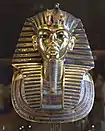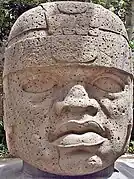古代史
古代世界,或者古代史一詞,用法相當模糊。
時間上限
其所指稱的歷史時期依各文明發展情況快慢而有所不同,但就其上限而言,一般是以出現文字作為古代史與史前史之分界。
時間下限
古代史之下限,則各文明不同。
就中國歷史而言,依照中华人民共和国的官方史學,稱呼1840年以前的全部中國歷史為「中國古代史」。 在台灣、日本、西方國家,「古代史」可能為先秦的同義語(此時又稱「上古史」)[1][2];以內藤湖南為代表的多數日本史學家則以東漢滅亡為中國古代史的下限(如谷川道雄《世界帝國的形成》)。
歐洲歷史通常以西羅馬帝國滅亡(476年)為下限[3][4];也有以610年為下限。
日本歷史通常以1192年鎌倉幕府建立,或者是1160年代平清盛建立第一個武家政權為從古代到中世的下限。
古代史後之歷史時期,一般稱為「中世紀」或「中古」;但如採用1840年以前為「中國古代史」這種說法時,之後就直接銜接「中國近代史」。
參考資料
- Foster, S. (2007). Adventure Guide. China (页面存档备份,存于). Hunter travel guides. Edison, NJ: Hunter Publishing. p. 6-7 (cf., "Qin is perceived as 'China's first dynasty' and [... developed] writing.)
- Gernet, J. (1996). A History of Chinese Civilization. Cambridge: Cambridge University Press.
- Clare, I. S. (1906). Library of universal history: containing a record of the human race from the earliest historical period to the present time; embracing a general survey of the progress of mankind in national and social life, civil government, religion, literature, science and art. New York: Union Book. Page 1519 (cf., Ancient history, as we have already seen, ended with the fall of the Western Roman Empire; [...])
- United Center for Research and Training in History. (1973). Bulgarian historical review. Sofia: Pub. House of the Bulgarian Academy of Sciences]. Page 43. (cf. ... in the history of Europe, which marks both the end of ancient history and the beginning of the Middle Ages, is the fall of the Western Roman Empire.)
This article is issued from Wikipedia. The text is licensed under Creative Commons - Attribution - Sharealike. Additional terms may apply for the media files.
_(2).jpg.webp)





.jpg.webp)

